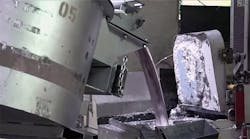Toyota Raises Investments in Hybrid Vehicle Systems
The Toyota Motor Manufacturing aluminum casting plant in Jackson, TN, will share in a new, $90-million outlay the automaker has pledged as it expands production for its hybrid electric vehicle product line. The automaker is increasing production of hybrid transaxles, having set a 2025 goal of offering an electrified option for all Toyota and Lexus vehicles.
Hybrid electric systems combine two power sources (i.e., an internal combustion engine and an electric motor), which offset each other and compensate for respective limitations. While hybrid-electric systems are more complex than the battery electric propulsion other automakers have adopted, Toyota claims that its alternative will achieve energy efficiency, as the hybrid transaxle can transfer power “seamlessly between the engine, electric motor, and wheels”.
Specifically, Toyota Tennessee is marked to receive $17 million to add casting capacity for 1.3 million hybrid transaxle cases and housings annually. The onetime Bodine Aluminum operation currently casts 1 million transmission cases and housings and approximately 1.8 million engine blocks per year.
The greater share of the new capital investment will go to the Toyota Motor Manufacturing West Virginia engine and transmission plant in Buffalo, WV, where $73 million is set now to raise hybrid transaxle production capacity to 600,000 units per year. Last November, Toyota posted a $240-million capital investment plan to install a new production line for hybrid transaxles at Toyota West Virginia.
The new investment also will add an assembly line for an estimated 120,000 rear-motor stators per year, for electric motors.
